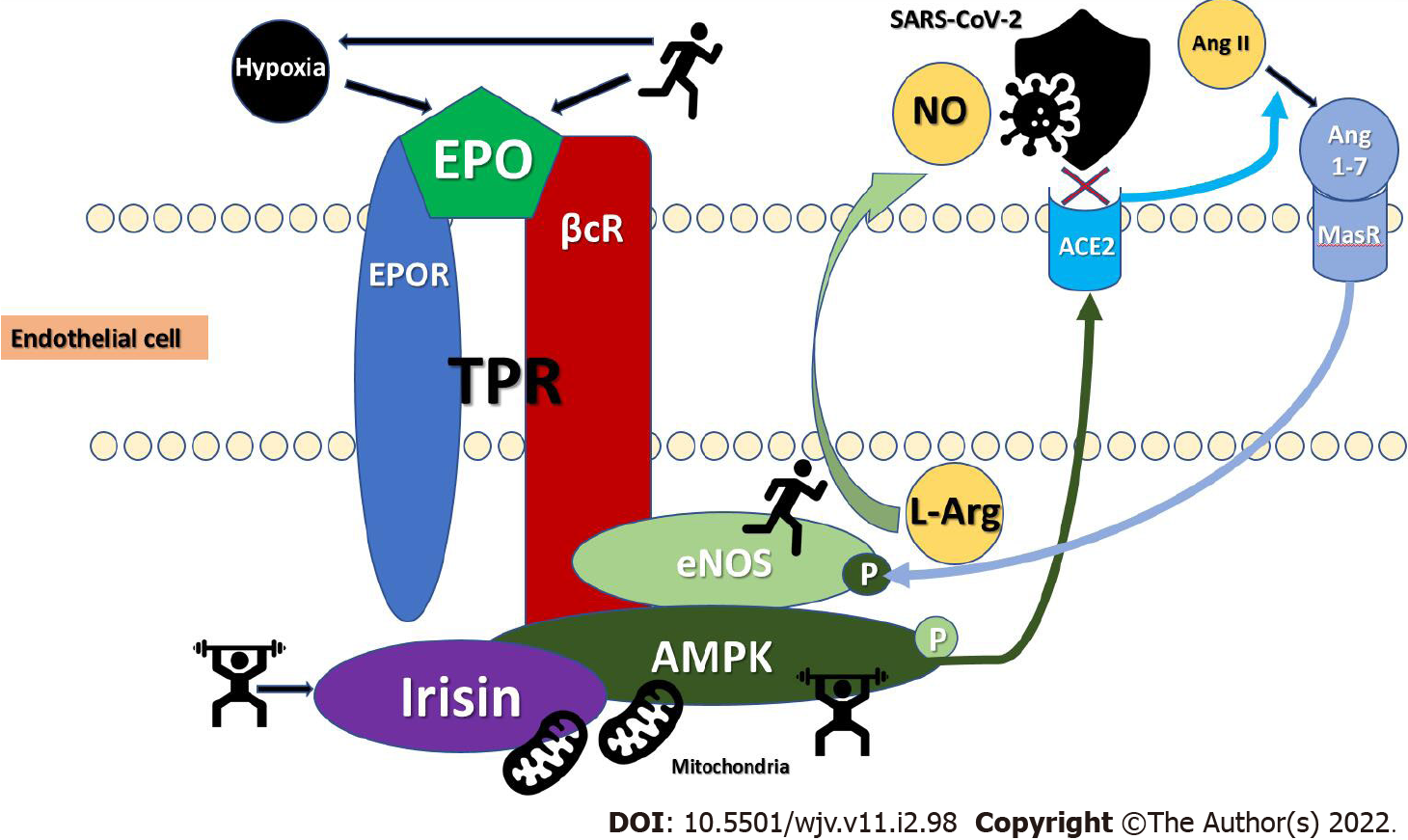Copyright
©The Author(s) 2022.
World J Virol. Mar 25, 2022; 11(2): 98-103
Published online Mar 25, 2022. doi: 10.5501/wjv.v11.i2.98
Published online Mar 25, 2022. doi: 10.5501/wjv.v11.i2.98
Figure 1 Molecular mechanisms of exercise.
Chronic exercise induces transient hypoxia and elevates erythropoietin (EPO) that induces endothelial nitric oxide synthase (eNOS) via the tissue protective receptor (EPOR/βcR). Exercise activates adenosine monophosphate-activated protein kinase (AMPK) and releases Irisin, resulting in eNOS activation and subsequent nitric oxide production inhibiting severe acute respiratory syndrome coronavirus 2 (SARS-CoV-2) replication and mitigating cell entry (X). AMPK stabilizes angiotensin-converting enzyme (ACE) 2 and increases protective angiotensin (Ang) 1-7 conversion which in turn activates eNOS via the MasR. Irisin also exerts protective functions on mitochondria. AMPK: Adenosine monophosphate-activated protein kinase; EPO: Erythropoietin; EPOR: EPO receptor; βcR: β-common receptor; TPR: Tissue protective receptor; eNOS: Endothelial nitric oxide synthase; NO: Nitric oxide; L-Arg: Arginine; ACE2: Angiotensin-converting enzyme 2; Ang II: Angiotensin II; Ang1-7: Angiotensin 1-7; MasR: Mas receptor; P: Phosphorylation; SARS-CoV-2: Severe acute respiratory syndrome coronavirus 2.
- Citation: Papadopoulos KI, Sutheesophon W, Aw TC. Too hard to die: Exercise training mediates specific and immediate SARS-CoV-2 protection. World J Virol 2022; 11(2): 98-103
- URL: https://www.wjgnet.com/2220-3249/full/v11/i2/98.htm
- DOI: https://dx.doi.org/10.5501/wjv.v11.i2.98









